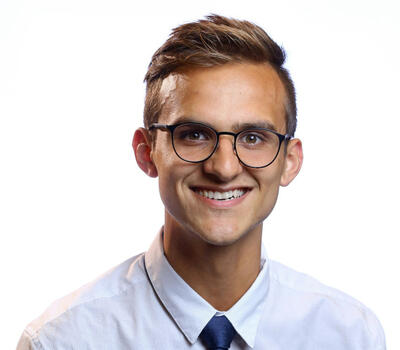Jesse Rodríguez had already mapped out his future while in high school: After earning an engineering degree, he would join his father’s construction company in Salem, Oregon.
“My parents didn’t go to college, but they understood the importance of education,” said Rodríguez, assistant professor of mechanical engineering and the Nesbitt Faculty Scholar in Energy Engineering at Oregon State University. “It was considered a practical achievement that put you in a position to earn a good living.”
Fortunately for the College of Engineering, his perspective would gradually shift after a series of fortuitous experiences.
Early aspirations and influences
One occurred at a science and engineering summer camp at the University of California, Berkeley. Activities there included a group presentation about a futuristic technology. From the list of options, nuclear fusion caught his eye. So, he stayed up all night learning as much as he could about the unfamiliar subject.
“The more I read, the more fascinated I became, so I persuaded our team to do our presentation on nuclear fusion,” he said.
Another came when his high school physics teacher urged him to reconsider his plans to join the family business.
“He worried I might waste my talent working in construction,” Rodríguez said. “When I told him that to go into the family business would mean almost guaranteed financial security, he told me to consider what I’d do if I already had all the money in the world. I immediately thought ‘Well, I suppose I would learn everything I could about nuclear fusion and try to make it a reality.’ I carried that thought with me for a long time.”
He enrolled at UC San Diego and majored in structural engineering. The program didn’t fulfill his expectations, so he returned to Oregon after one quarter. Finally, he took a leap toward the intellectual challenge he’d thought about for so long, enrolling in the Honors College at Oregon State University and declaring his major in nuclear engineering.
Soon after starting at Oregon State, he took his first physics class, the instructor of which was known for giving notoriously tough tests.
“The exams were comically difficult,” Rodríguez said. “They were beautiful and amazing — the hardest exams I had ever taken — and I told myself, ‘I really want to understand this.’”
So, he added a physics major, and, as he kept plowing through classes, he decided to major in mathematics as well.
During a typical week, Rodríguez spent 90 hours attending classes and studying. One quarter, he took 10 classes and earned 27 credit hours.
“I was passionate about all three subjects,” he said. “Yet, I still hadn’t thought much about what I’d do after graduating.”
That changed when his first-year calculus professor, Juan Restrepo (now at Oak Ridge National Laboratory) asked him to do a special project: solve partial differential equations about subsurface flows in granular media.
He worked the problem over the summer, then presented his work at the Society for the Advancement of Chicanos/Hispanics and Native Americans in Science conference in Washington, D.C., in November 2015. While there, Rodríguez met a Stanford graduate student who introduced him to research experiences for undergraduates, or REUs, which are important steppingstones to graduate school. He completed REUs at the University of Chicago’s Department of Astronomy and at Stanford, where he worked on a coaxial plasma accelerator.
In 2018, four years after he began college, Rodríguez earned all three undergraduate honors degrees. He went on to Stanford to earn a doctorate in mechanical engineering in 2023, then spent the following year as a postdoctoral researcher at Princeton. Rodríguez joined the College of Engineering faculty in the fall of 2024 and is currently setting up his Strongly Coupled Systems Laboratory.

Research interests and future goals
His primary research interests include using plasma to manipulate electromagnetic waves for applications such as enhancing antenna technology and for optical computing, a new paradigm of computing in which photons rather than electrons are used to perform computations.
He’s also investigating ways to predict disruptions that occur during nuclear fusion reactions in tokamaks. The devices use powerful magnetic fields to prevent superheated plasma from touching the reactor walls, which can cause severe damage.
“Just by pulling me aside and giving me a new opportunity, Professor Restrepo snapped me onto a path where I was able to do something in academia that has been very fulfilling and that I didn’t really even have a conception of being available to me,” Rodríguez said. “Now I hope I can pay that forward for other students.”




